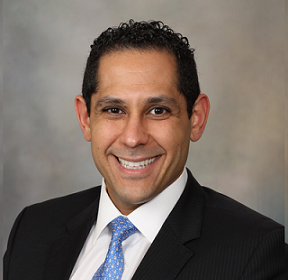Elizabeth Hofheinz, M.P.H., M.Ed.
Now that we know telemedicine is here to stay, it’s helpful to have reliable sources of information regarding how to do it right. Two orthopedic surgeons from Nemours Children’s Health System have outlined the details in their new textbook, “Telemedicine in Orthopedic Surgery and Sports Medicine,” recently published by Springer.
The book, which includes insights from 12 experts from Nemours, as well as 11 experts from around the country, includes information on:
- where and how to get started,
- how to implement a telemedicine program,
- how to do research in telemedicine,
- how to develop clinical guidelines and best practices for work in telemedicine,
- regulation and licensing,
- billing and coding,
- ethics,
- etiquette
- insights into global telemedicine implementation and research
OSN asked Alfred Atanda Jr., M.D., editor of the textbook and Director of the Center for Sports Medicine, Department of Orthopedic Surgery, Nemours/Alfred I. duPont Hospital for Children, what might be difficult about doing sports medicine in this nontraditional manner? Dr. Atanda stated, “Many of the challenges, I would say, are actually ‘perceived challenges,’ such as the need to see a patient in person in order to adequately diagnose and treat, the concern about missing something by not having the patient in an exam room, and the ‘disconnect’ of not being in the same room. But I’ve been doing telemedicine visits with my patients for five years now. And I can honestly say that with some tenacity and forward thinking all of these perceived challenges will easily be overcome.”
Buffering…
“What I can say is a real and consistent challenge is technology. Relying on the audio and visual to work on both sides (patient and doctor) can sometimes hinder or slow down a visit. Making sure there is dedicated tech support to help you trouble shoot is very important.”
“Finally, there are definite upfront challenges in licensing and billing. For licensing, normally your patients come to you, in the state you are licensed in. But if you do a telemedicine visit, and they live in a different state, suddenly you need to be licensed in that state. Additionally, there is a learning curve on coding a billing telehealth visits from state-to-state. But I believe these are simply growing pains that are easy to overcome.”
Asked what epiphanies the authors have had about how to do things this way, Dr. Atanda told OSN, “What we have been able to track is that a vast majority of our patients could have been seen virtually all along, while still receiving high quality care. With the ability to have a virtual visit first, we can triage their situation, review x-rays, and provide a course of action, which—of course–may require an in-person visit. But many times, there’s no need for a patient to ever come into an exam room.”
A no-brainer?
“There really isn’t always a benefit for making a family take time off work and school, travel outside of their ‘medical home,’ sit in a waiting room, and then have a ten-minute visit that could just as easily have been done from the comfort of their own home—or even from their pediatrician’s office. We can provide high-level specialty care, including being able to triage, counsel, and answer questions, all while saving the family time and money.”
“Telemedicine is here to stay. Perhaps escalated because of the COVID pandemic, virtual doctor’s visits have revolutionized the way we provide care. It doesn’t REPLACE care, it enhances and augments the care we provide. This really is a natural evolution of how care is delivered.”








